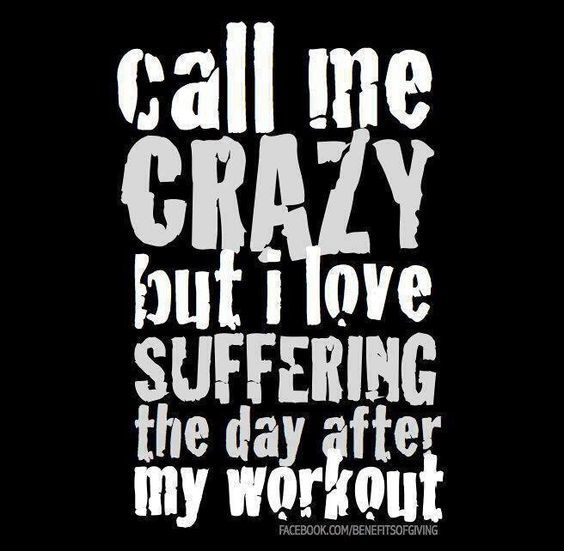No pain, no gain?
No pain, no gain at the gym, right? Right? Absolutely not!

These days there seems to be an increase in the amount of fitness memes and “motivational” quotes that claim working through pain is something to be celebrated, something to strive for. Unfortunately, this is really not the case. If you are in pain during a workout, or a particular exercise, it is really best to stop what you’re doing immediately and re-evaluate.Pain as protectionPain is produced by the body as an evolutionary response to protect itself. For example, if you touch something too hot, your body automatically generates a reflex that pulls your hand away quickly. However, if you hold your hand there too long, pain is generated. This is your body’s way of telling you that you should stop what you’re doing and remove yourself from the painful stimulus. The same can be said of a workout or a particular exercise. If it is causing you pain, it is your body trying to tell you to stop or to lighten the load or maybe change a position to something more comfortable.DOMSDOMS stands for delayed onset muscle soreness. It happens hours after a particularly tough workout. If you have recently increased your load (e.g. added more weight to your lifts or run for a much longer distance than you’re used to), you may experience DOMS after your workout. This can be normal to an extent. You might feel a bit achey or tight. DOMS will generally recrease after some massage or foam rolling. However, if the pain persists, you may want to throw an extra rest day into your week to allow your body more time to recover. Training for longevity and progressYou should not be in pain during a workout. If you are finding you are in pain more often than not, it is best to change that exercise that is the problem to something that your body finds more comfortable. If you push through the pain, you will likely end up with a more serious injury. If you get injured, you’re going to have to skip your workouts for much longer than you’d like to allow your body time to recover and to re-train movement patterns so you are no longer in pain. Ideally, you should feel like your muscles are working but not hurting. This means that you will be able to continue a long term training plan. Stopping a workout or exercise before pain becomes an injury will help you a lot more in the long run. It is also a good idea to come see your physiotherapist or massage therapist as soon as a pain becomes apparent. You’ll be able to work on a treatment plan to stop it before it becomes a problem!Body awarenessBody awareness is something that isn’t always an evident part of a workout routine. However, knowing your body and when something feels “off” is a valuable skill. Try to notice how your body is feeling and make note of any specific movements or exercises that tend to trigger a painful feeling. This will make it easier to work on recovery and work past the pain, rather than through it. Your body can change from day to day, and some things mean you might have to take it a little easier some days. These reasons could include lack of sleep, a recent illness, and stress.
InSync Physiotherapy is a multi-award winning health clinic helping you in Sports Injuries, Physiotherapy, Exercise Rehabilitation, Massage Therapy, & IMS.
